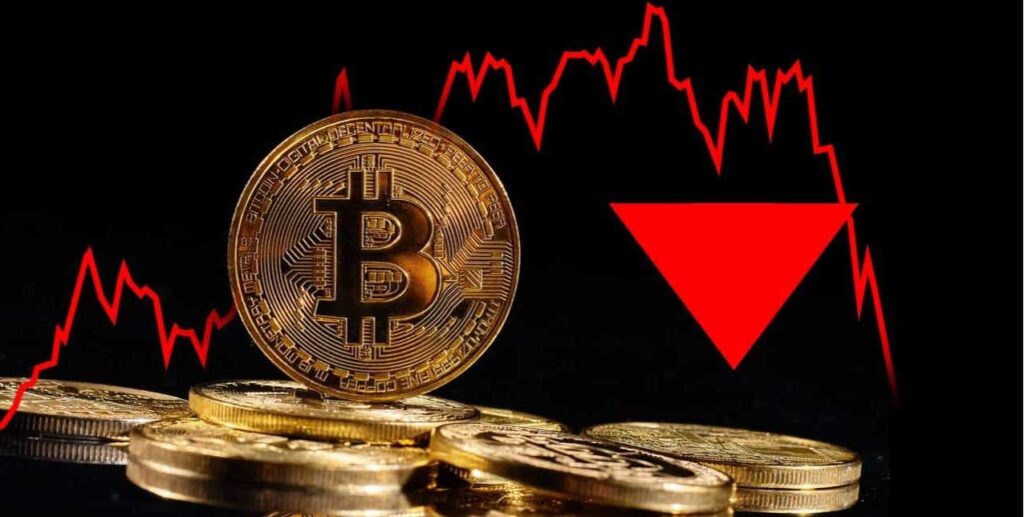Bitcoin’s price has collapsed from a record $69,044 in November to just above $20,000 today.
Bitcoin’s price is under fire from multiple directions. The Winklevoss twins have labelled the current downturn a ‘crypto winter,’ driven by ‘macroeconomic and geopolitical turmoil.’
Of course, this isn’t the first major correction, and it won’t be the last. Bitcoin was worth $19,650 on 15 December 2017, before plunging to $3,183 a year later.

It then took until late 2020 to recover to this price point, before soaring to $61,284 by mid-March last year. Then after falling to $31,576 in July, Bitcoin spiked to a record $69,044 in November.
But the crypto collapsed to under $19,000 last week, and despite recovering to $20,494 today, could have much further to fall.
Bitcoin price: inflation and regulation
Up until very recently, Bitcoin was touted as a strong hedge against inflation. But with 80% of all US dollars in existence printed between January 2020 and October 2021, US CPI inflation has risen to 8.6%, and Bitcoin has continued to depreciate.
The Federal Reserve has responded to inflation by increasing its key interest to a range of 1.5% to 1.75%. Further large rises seem inevitable. And now Bitcoin’s price trajectory seems tied to the NASDAQ Composite; both watered with ultra-loose pandemic-era monetary policy that is coming to an end.
This negative effect is being accelerated by the $60 billion collapse of Terra stablecoin, after it failed to maintain its dollar peg. Fear then infected Tether and Luna, and now gnaws at the crypto king. Worse still, investors from Elon Musk to Michael Burry see a recession on the horizon, with US Reserve Chair Jerome Powell yesterday admitting a downturn remains ‘certainly a possibility.’
Moreover, regulatory problems are on the up. In the US, SEC Commissioner Hester Peirce argues ‘there’s a lot of fraud in this space… we’ve sort of dropped the regulatory ball… there are long-term consequences of that failure.’
And in China, media outlet Economic Daily, run by the central committee of the Chinese Communist Party, has warned investors that ‘Bitcoin is nothing more than a string of digital codes…once investors’ confidence collapses or when sovereign countries declare bitcoin illegal, it will return to its original value, which is utterly worthless.’ The country ineffectively banned crypto last year.
Bitcoin price: crypto lenders
A further threat to Bitcoin’s price is the newly exposed weakness of the major crypto lenders. The price crash has raised concerns over forced liquidations of their large leveraged bets, which could spur further sales and intensify the crypto credit crunch.
Celsius Network has further rattled investors after warning it will ‘take time’ to normalise operations after suspending withdrawals. Babel Finance has also paused withdrawals, citing ‘unusual liquidity pressures,’ while Hong Kong-based exchange Hoo has followed suit, citing the risk of exhausting available funds. Meanwhile, Three Arrows hedge fund has failed to meet margin calls from its lenders.
The problem now is that when these exchanges allow withdrawals, they risk a crypto run. And the longer they keep them on pause, the further Bitcoin will fall.
Meanwhile, the largest US crypto exchange, Coinbase, has seen its share price collapse amid a firing spree and liquidity concerns. Overall, crypto companies have fired 1,700 staff this month alone. Mizuho analyst Dan Dolev argues that Coinbase’s reduced trading volumes are pointing to crypto fatigue, saying ‘the rise in volumes during early June appears to be fading.’
Bitcoin’s future
Of course, many believe in the long-term future of Bitcoin. MicroStrategy CEO Michael Saylor thinks ‘Bitcoin is going to outlive all of us…we are witnessing the birth of a new industry.’ Despite its share price collapsing by 70% year-to-date, the investor has hailed Bitcoin as ‘incorruptible, indestructible.’
Blackrock CIO of global fixed income, Rick Rieder, attributes the crash to mass deleveraging, saying ‘a lot of the leverage that was built up around crypto has come unglued pretty darn quickly.’ However, he enthuses that ‘bitcoin and crypto are durable assets…there’s a healthy recalibration going on…if you look two to three years hence, they will be higher than today.’
Meanwhile, the largest crypto exchange in the world, Binance, is no longer charging fees for buying or selling Bitcoin with US dollars. BinanceUS CEO Brian Shroder called the change ‘an opportunity to revolutionise the way fees are approached in our industry, increase access to crypto, and help our market.’
CEO Changpeng Zhao thinks Bitcoin ‘from the all-time high of 68k to 20k now, it will probably take a while to get back. It probably will take a few months or a couple of years.’ The CEO has built up a ‘war chest’ of funds during the bull run, giving the company the fiscal headroom necessary to announce 2,000 job openings.
But with the balance of opinion currently against Bitcoin’s price, a further correction south of $10,000 remains a chilling possibility.
